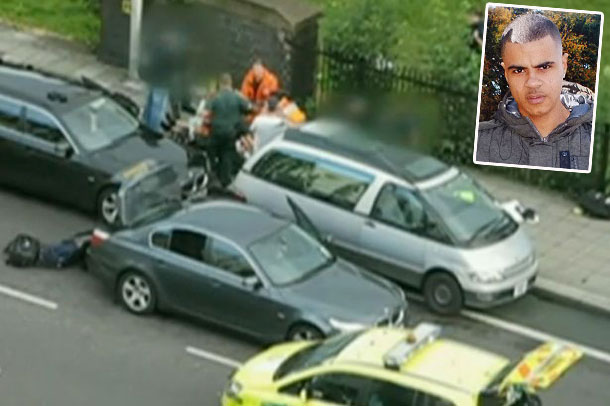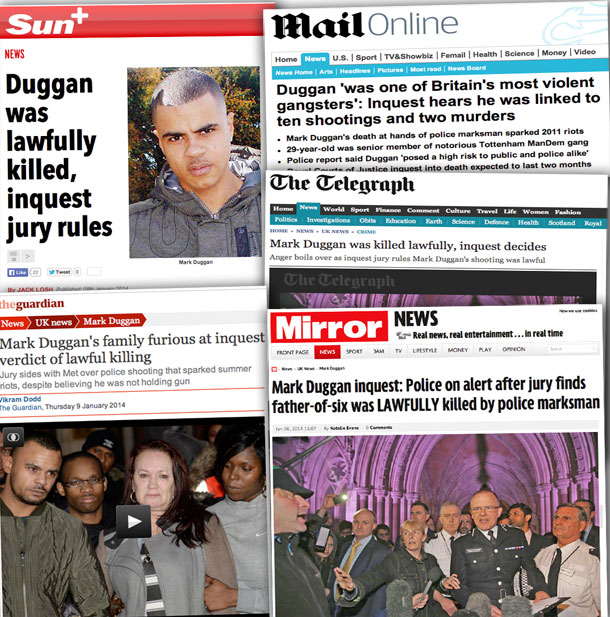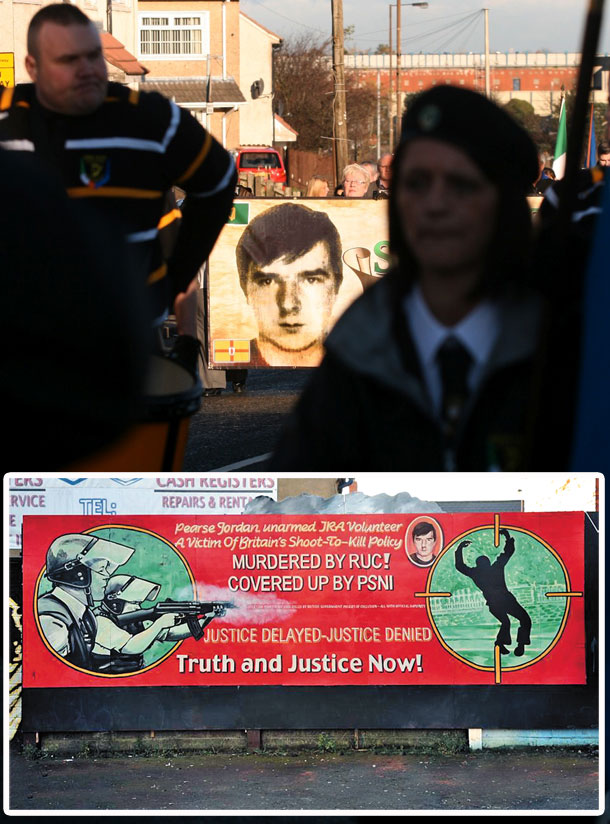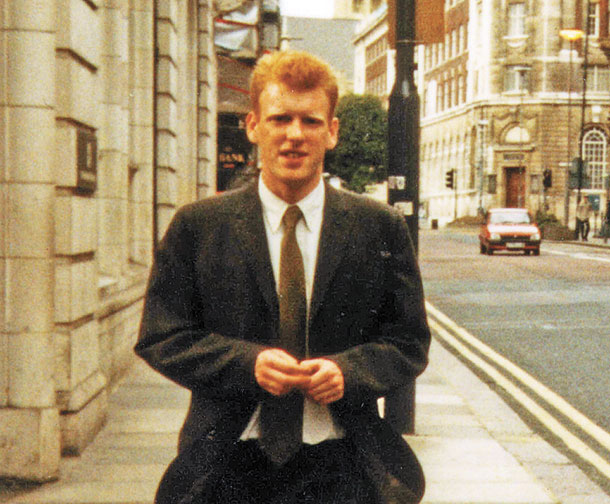2 February 2014 Edition
Tottenham verdict’s echoes in Ireland
London inquest finds that police shooting of unarmed man was ‘lawful’

• Mark Duggan (inset) a video still showing the scene of the shooting taken by an eyewitness
Inquests in the North, particularly those relating to people killed by state forces, have been shrouded in controversy for years
THE CONTROVERSIAL INQUEST finding in London in January that the Metropolitan Police were acting lawfully when they shot dead an unarmed Mark Duggan, the 29-year-old father of six whose killing led to the London riots of August 2011 brought to mind inquests into the deaths of Irish republicans at the hands of the police.
The inquest verdict handed down in the Duggan case will be instantly recognisable to Northern nationalists. What they won’t have recognised is the almost wall-to-wall coverage of the verdict in the British media and across the so-called liberal spectrum of British politics in the wake of the verdict.
Inquests in the North, particularly those relating to people killed by state forces, have been shrouded in controversy for years. It can be argued that inquests have been used by the state to deny justice to the families of victims of state violence.
In the 1985 report, Shoot to Kill? The findings of the International Lawyers’ Inquiry into the Lethal Use of Firearms by the Security Forces in Northern Ireland, they say in respect of inquests that they are “convinced that where civilians are shot dead by members of the security forces on duty, the Northern Ireland coroners’ courts lack the capacity to carry out fully independent and impartial inquiries into the causes of death”.
Damningly, the report adds:
“We find that inquests are delayed unreasonably, sometimes for explicitly political reasons; material witnesses are not summoned to attend and give evidence and unreliable scientific evidence has been accepted.
“We note that the law regulating coroners’ courts in Northern Ireland has been changed to deprive juries of the power to return verdicts.”
The lawyers’ report goes on to highlight the importance of inquests as “the only place to find out the truth behind a killing” because “less than 8% of those killings of unarmed civilians by members of the security forces in disputed circumstances have resulted in criminal charges”.

• Wall-to-wall coverage in the British media on the inquest verdict which found the unarmed 29-year-old father had been ‘lawfully’ killed by police
This 8% only represents charges brought and does not indicate how many convictions were secured.
The reality then for families of people killed by the state is that, with little hope of a trial or a judicial process they can have faith in, they have turned to the coroner’s court.
This avenue was used by families in the aftermath of the 2001 ruling by the European Court of Human Rights which found in the case of IRA Volunteer Pearse Jordan, shot dead by the RUC in 1992, that his Article 2 ‘Right to Life’ was violated by Britain’s refusal to hold a proper investigation into his death.
An inquest was eventually held but, in October 2012, the jury (which was, according to the Jordan’s legal team, “hopelessly divided”) failed to reach agreement on key aspects of the case.
The Jordan family is challenging the findings of that inquest.
The legal system in the North was moulded to suit the political and military requirements of Britain’s counter-insurgency war.
And as the lawyers’ inquiry concluded “the coroners’ rules in Northern Ireland have been designed to protect the security forces”.
As with the many cases of ‘Shoot to Kill’ involving Irish republicans and that of Mark Duggan in Tottenham, state forces have, again and again, got away with murder.

• Unarmed IRA Volunteer Pearse Jordan (22) was gunned down by the RUC on the Falls Road in Belfast
The Met’s ‘lawful’ killing of Diarmuid O’Neill

THE Mark Duggan case has similarities with the case of IRA Volunteer Diarmuid O’Neill in London in 1996, similarities that the British media have missed or chosen to ignore.
Diarmuid was an unarmed IRA Volunteer shot dead by the Metropolitan Police at a London flat while attempting to surrender.
He was under intense surveillance and could have been arrested at any time prior to the raid on his home. Not only was Diarmuid unarmed, neither he nor those with him offered any resistance to the police.
As Diarmuid opened the door to his flat in response to a police command, one officer urged his colleagues to open fire. Diarmuid was shot six times. The autopsy report said there was the imprint of a shoe on the side of his face where a police officer had stood on him as he lay dying.
The police refused him medical help, dragged him down several flights of stairs and then deliberately lied to the press, claiming there had been a shoot-out.
The jury at the inquest in February 2000 returned a verdict of lawful killing.
After the verdict, the O’Neill family issued a statement, saying:
“Our son was shot in the middle of the night when he had been woken from a deep sleep. He was in his underpants. He was unarmed. An MI5 recording tape was running at the time in the room he was in. We can hear on the tape police officers shouting orders and we can hear Diarmuid obeying those orders. He was told to open the door, which he did, and he was shot as soon as he obeyed . . .
“We are very conscious that nothing can bring our son back to life. But all of this could happen again. Our son is not the only unarmed person who has been shot by armed officers in recent years in London.
“Now that this inquest has finished and has uncovered decisions and actions that the police clearly are content to repeat, we suggest that a different form of public inquiry be held which can investigate all recent fatal shootings by armed police in order to ensure that lessons are learned, whether or not the police voluntarily agree.”




